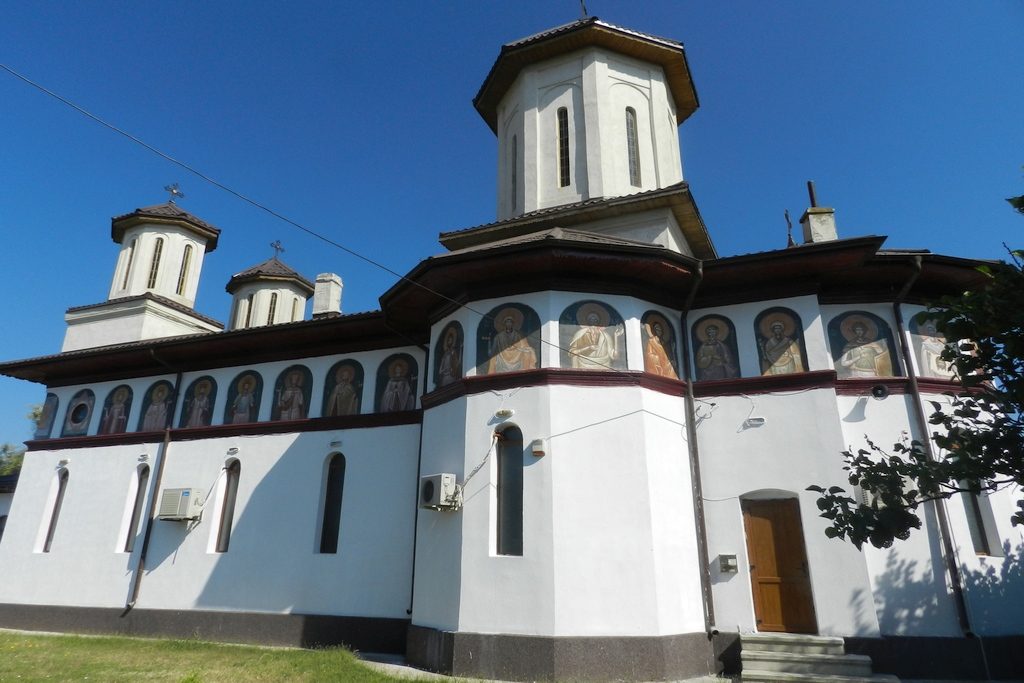

Saint Gheorghe Church from Șoldanu was built in the year 1934.
Șoldanu (know in the past as Negoești) is a commune formed from the villages Negoești and Șoldanu (the residence).
At the end of the XIXth century, on the current territory of the commune there functioned the commune Aprozi – Negoești, in the hundred Negoești of the county Ilfov. It was formed from the villages Aprozi, Frecați, Lacu Cocorului and Negoești, having in total 1235 inhabitants, which lived in 281 houses and 12 cottages.
In the commune there functioned a steam mill, two churches (at Aprozi and Negoești) and a mixed school, and the principal owners of the lands where general Manu, the state and Elena C. Cornescu. The Socec Annual of 1925 mentions this commune in the hundred Budești of the same county, under the name of Aprozi, having in the composition the villages Aprozi, Negoești and Șoldanu.
In 1931, there appeared the current commune, named Negoești formed from the villages Negoești – Poșta and Șoldanu.
In 1950, the commune passed onto the administration of the rayon Oltenița from the region of Bucharest, coming back to the county Ilfov in 1968, it having back then already the name of Șoldanu, from the new residence. In 1981, a regional administrative reorganization led to the transfer of the commune at the county of Călărași.
In the commune Șoldanu, there is situated the monastery Negoiești, historical architecture monument of national interest, dating back to 1649. The ensemble is situated at the eastern margin of the village Negoiești, on the margin of DN4, and it is formed from the church “Saints Michael and Gabriel” (1649), from the ruins of some sanctums and from the wall inside (1777).
According to the census made in 2011, the population of the commune Șoldanu was up to 3.565 inhabitants, rising in comparison with the previous census of 2002, when there were registered 3.533 inhabitants. The majority of the inhabitants are Romanians (68, 89%), with a minority of Gypsies (25, 13%). For 5, 89% of the population, the ethnical affiliation isn’t known. From the confessional point of view, the majority of the inhabitants are orthodox (93, 41%). For 5, 89% of the population, the confessional affiliation isn’t known.
The principal economical activities developed in the commune aim: the agriculture, raising the animals, typography, the commerce and the service provision.
The surface of the commune is of 4227 hectares.
